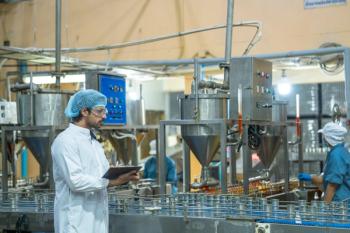
Analysis of Edible Clams Uses Total Reflection X-ray Spectrometry
Bivalves, such as clams, frequently are used as bioindicators to assess coastal aquatic environments because they can accumulate trace metals and other substances-up to 100 times higher than the concentration levels found in the water in which they live, including elements such as chromium, lead, arsenic, and cadmium, which can be toxic even at low concentrations. Given that many bivalves are consumed by people, this bio-accumulation presents food safety as well as environmental risks.
Bivalves, such as clams, frequently are used as bioindicators to assess coastal aquatic environments because they can accumulate trace metals and other substances-up to 100 times higher than the concentration levels found in the water in which they live, including elements such as chromium, lead, arsenic, and cadmium, which can be toxic even at low concentrations. Given that many bivalves are consumed by people, this bio-accumulation presents food safety as well as environmental risks.
Researchers in Spain and Portugal recently used X-ray fluorescence (EDXRF) spectrometry and total reflection X-ray fluorescence (TXRF) spectrometry to investigate the chemical composition with respect to major, minor, trace, and ultratrace elements in several clam species that are frequently used for human consumption in Portuguese markets and worldwide. (1)
Currently, use of inductively coupled plasma mass spectrometry (ICP-MS) usually is preferred among the atomic spectroscopic techniques, due to its multi-elemental capability, the extremely low limits of detection for most elements, and high sample throughput. Using ICP-MS, however, often involves sample preparation procedures for the total destruction of the solid matrix by means of a previous chemical treatment.
In their paper, “Total Reflection X-ray Spectrometry (TXRF) for Trace Elements Assessment in Edible Clams,” the researchers noted that a great advantage of X-ray fluorescence techniques compared to wet chemical procedures is that the multi-elemental analysis can be directly carried out on solid samples. They found that the main advantages of the proposed TXRF method are the simple sample treatment, the easy quantification through internal standardization, and the low operating costs since the benchtop system used does not require cooling media and gas consumption to function.
The results of this research showed that the TXRF method can be a promising analytical tool for the determination of minor and trace elements as long as the element concentrations are higher than 5–10 mg/kg. For the determination of lower concentration levels more sophisticated techniques such as ICP-MS are required.
Reference
(1) E. Margui, A. Marques, M. Prisal, M Hidalgo, I. Queralt, and M. Carvalho, Appl. Spectrosc., 68, 1241–1246 (2014).
Newsletter
Get essential updates on the latest spectroscopy technologies, regulatory standards, and best practices—subscribe today to Spectroscopy.





